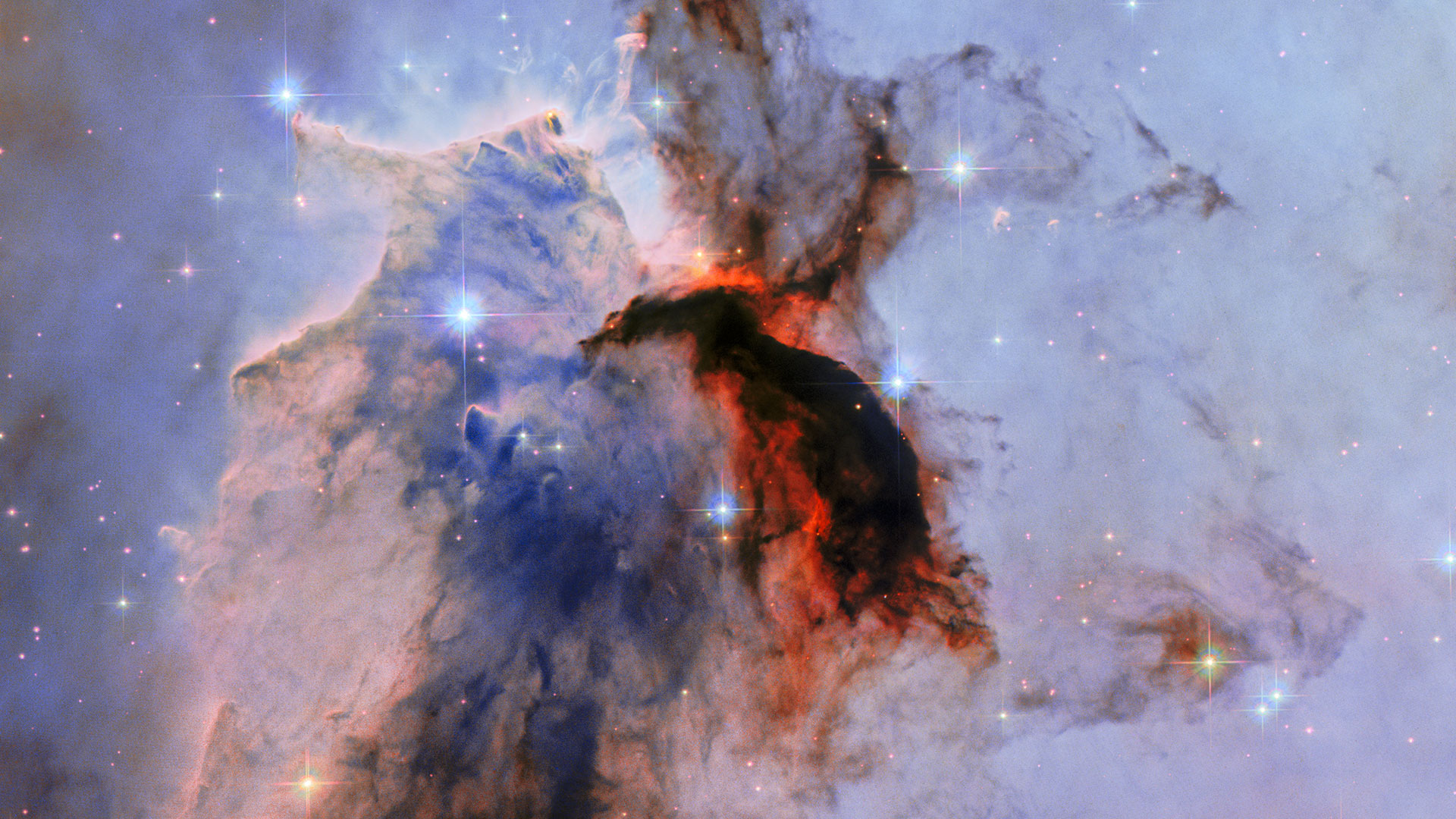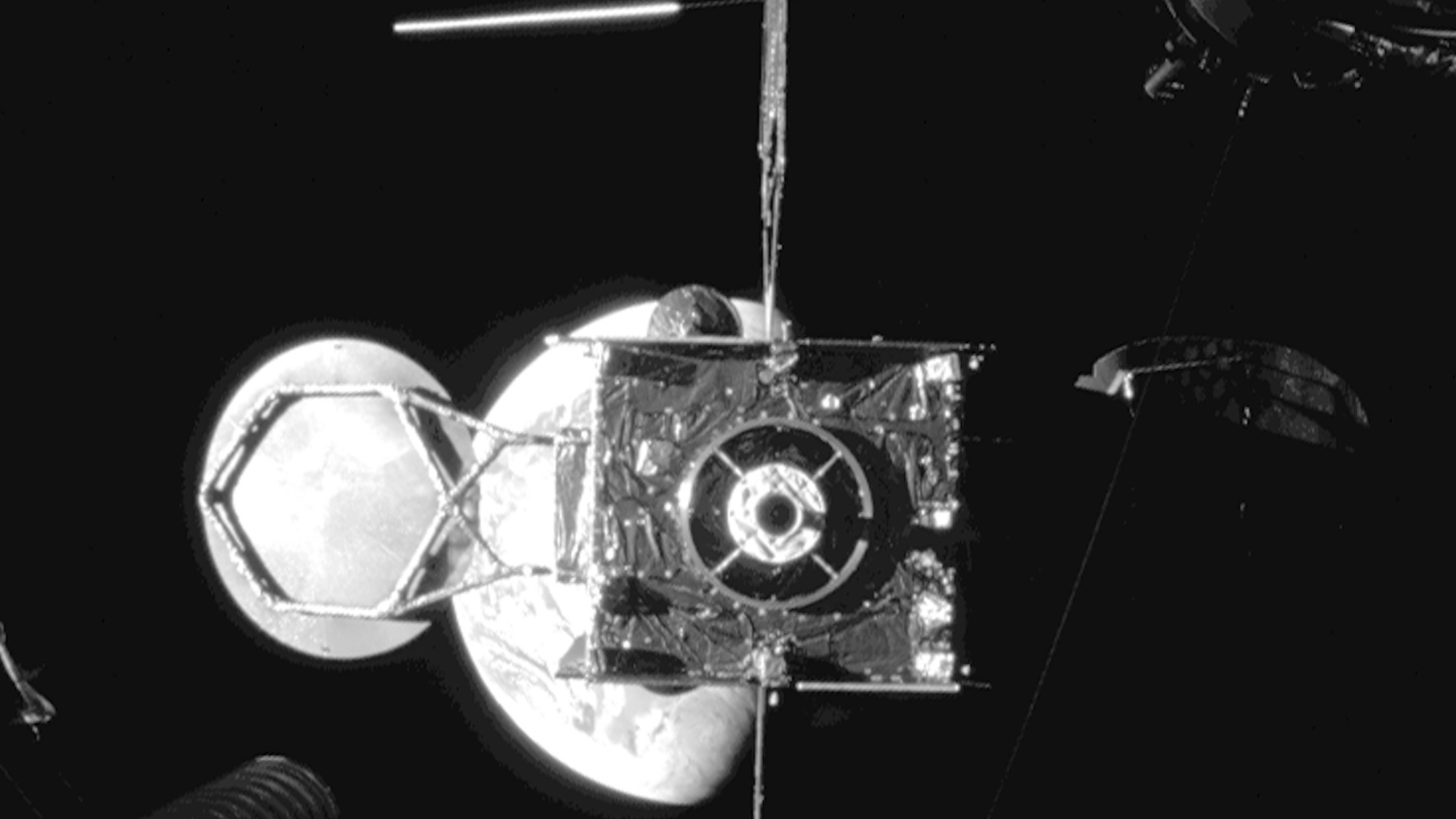Dimming Mars and Crescent Moon Cross Paths in Sunday's Evening Sky

Look for a waxing crescent moon passing the diminishing Red Planet during the evenings of Dec. 4 and 5.
Back in the spring, Mars was a dazzling yellow-orange light visible low in the southeastern sky just after sundown. On May 22, Mars was at opposition to the sun, and eight days later, the Red Planet made its closest approach to Earth since October 2005. Mars came to within 46.8 million miles (75.3 million kilometers) of Earth and shined nearly twice as brilliantly as Sirius, the brightest star in the sky.
Mars is far dimmer these days, at magnitude +0.7, but that's still bright enough for the planet to stand out prominently among the faint star fields in eastern Capricornus, the sea goat. The Red Planet has retreated to a distance of 136 million miles (219 million km) from Earth and now shines with only one-twelfth of the brightness it displayed last May. [Geminid and Ursid Meteors, Planets and a Comet in Dec. 2016 Skywatching]
On Sunday evening, look about one-third of the way up from the south-southwest horizon about an hour after sunset to see a 25-percent-illuminated waxing crescent moon. Mars will sit about 6 degrees to the right of the moon. The Red Planet is now setting about 5 hours after sundown.
As we have noted many times before, your clenched fist is roughly equal to 10 degrees when held at arm's length. So Mars will appear just over "half a fist" from the moon.
If you own a telescope, even a moderately large one, I wouldn't really bother training it on Mars. The planet's disk has now shrunk down to less than 6 and one-half arc seconds in diameter. Put another way, you would need a magnification of no less than 280 power to enlarge Mars to the apparent size of the moon as seen with the naked eye. For most instruments, Mars will resemble nothing more than a pumpkin-hued circular dot of light.
And of course, because the moon is so much nearer to Earth than Mars — about 239,500 miles (385,200 km) away — the natural satellite appears to move much more rapidly against the background stars than the Red Planet does. The moon will pass to the north of Mars during the mid-to-late morning daytime hours of Monday. Both Mars and the moon will have long since set and will be below the horizon as seen from North America. So on Sunday evening, the moon will be approaching Mars, but 24 hours later, the satellite will be well to the upper left of Mars and leaving the Red Planet far behind.
Get the Space.com Newsletter
Breaking space news, the latest updates on rocket launches, skywatching events and more!
Joe Rao serves as an instructor and guest lecturer at New York's Hayden Planetarium. He writes about astronomy for Natural History magazine, the Farmer's Almanac and other publications, and he is also an on-camera meteorologist for News 12 Westchester, N.Y. Follow us @Spacedotcom, Facebook and Google+. Original article on Space.com.
Join our Space Forums to keep talking space on the latest missions, night sky and more! And if you have a news tip, correction or comment, let us know at: community@space.com.

Joe Rao is Space.com's skywatching columnist, as well as a veteran meteorologist and eclipse chaser who also serves as an instructor and guest lecturer at New York's Hayden Planetarium. He writes about astronomy for Natural History magazine, Sky & Telescope and other publications. Joe is an 8-time Emmy-nominated meteorologist who served the Putnam Valley region of New York for over 21 years. You can find him on Twitter and YouTube tracking lunar and solar eclipses, meteor showers and more. To find out Joe's latest project, visit him on Twitter.









